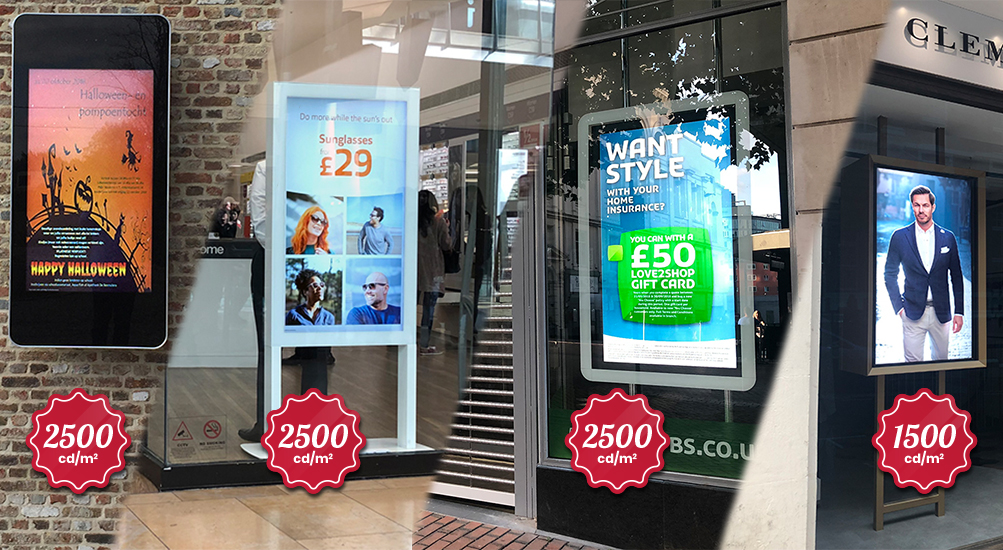
Digital Signage Solutions – “Sunlight Readable” – What does it really mean?
Ironically, the topic of “sunlight readable” LCD panels is a cloudy one. Many digital signage companies claim to have digital signage solutions that can be clearly readable in direct sunlight, but this article explores this claim and analyses what “sunlight readable” actually means.
Key Terms
Before an objective view can be taken on this subject a few key terms have to be understood. Firstly the brightness – or luminance – of a screen refers to the amount of light that passes through or is emitted from a particular area. This value is usually measured in candela per square metre (cd/m²) or nits. The flame from one candle is roughly 1cd/m². Another key term to understand is contrast ratio; this is the difference in the luminance of the brightest colour (white) to that of the darkest colour (black) that the system is capable of producing. Obviously high contrast ratios are ideal, whatever the environment. The final term is viewing angle and quite simply this refers to maximum angle at which a display can be viewed with acceptable visual performance. All of these values are affected in different levels of sunlight.
Domestic LCD Panels
To understand what level of brightness is needed in different situations, it is worth exploring the luminance values of some domestic LCD panels when they are brand new. The LCD panels in most laptops and PC monitors are around 200-300cd/m², a contrast ratio of around 800:1 and a low viewing angle. This is because they are for indoor use and users are generally less than 1 meter away from the screen so it is suited to its purpose. Similarly LCD panels found home televisions are around 300-400cd/m², have a contrast ratio of about 1000-2000:1 and a viewing angle of around 170°. These must be slightly brighter as the user is further away from the screen, as well as having a larger viewing angle so more of the room can see the contents clearly.
All domestic LCD panels fade relatively quickly, especially if used excessively. This lowers all of their values greatly affecting their functionality. The main factor to be affected over time is spatial uniformity; domestic LCD panels start getting darker in corner patches, lowering the overall brightness considerably. Consequently this affects the panels contrast ratio and after a few hundred hours of use is usually significantly less.
Commercial LCD Panels
Given that home televisions do not need to be any brighter than 400cd/m² for a living room space, there are not many commercial indoor digital signage solutions that require more than 700cd/m², as long as the contrast ratio is good. However, when talking about outdoor or outdoor-facing digital signage solutions, high levels of sunlight must be considered. Although a higher contrast ratio is not really necessary, a higher level of luminance is required because for these digital signage solutions, constant sunlight exposure has to be taken into account.
For this reason, our Outdoor Digital Advertising Displays and our Outdoor Freestanding Digital Posters have a brightness of 2,500cd/m², meaning they are sunlight readable even in direct sunlight. Similarly, we also have a range of high brightness indoor displays that can be used for outdoor-facing applications, such as window displays. At the lower end of the spectrum with a brightness of 700cd/m², a cost effective window display solution is our High Vibrance Displays. However, if a higher brightness is needed to ensure the screens are visible, we also have a range of other solutions. Our High Brightness Professional Monitors are 1500cd/m², whilst our Ultra High Brightness Monitors and Freestanding Ultra High Brightness Digital Posters are 2,500cd/m².
Get in touch today to find out which solution would be right for you!

Thomas Fraser-Bacon is the Marketing Director for Allsee Technologies. His background is in Digital Signage and Product Design.



